This is Part 2 of a 3-part series on exercising with hypothyroidism:
- Part 1 – How We Helped One Client Lose 17 lbs. By Boosting Her Thyroid with Exercise
- Part 2 – [You Are Here] – How to Stop Exercise from Ruining Your Thyroid
- Part 3 – Why Exercising More and Eating Less Is the Best Way to Gain Weight with Hypothyroidism
Want to know a condition that affects more people than hypothyroidism?
It’s a condition that almost everyone has, and no matter how hard you fight it, you simply can’t win.
I’m referring to a condition I like to call the “more is better” mindset.
You see, we live in a world of extremes.
People want to drive the fastest cars even though they are stuck driving 45 mph to work every day (72 km/h for those of you on the metric system).
People will undoubtedly spend twice as much for a TV that has a measly inch of extra viewing screen (2.54 centimeters).
And in a similar fashion, people tend to want to exercise to the extreme as well (ignoring the many thyroid exercise dangers).
Why?
Because people believe that if exercise is healthy, then the more you exercise the healthier it must be, right?
Unfortunately, that’s not the way it works.
Nobody questions the fact that eating every day is necessary for health, but overeating is unhealthy.
So, why would exercise be any different? Before you jump into your next Zumba class or set your sights on another treadmill…
…it’s important to understand that no matter how you look at it, exercise is a stress to your body.
And, if you’re not careful (as I’m about to show you), that exercise-stress can quickly and easily ruin your thyroid.
Think about it like this…
If you had a wood burning furnace to keep you and your family warm during the winter, you would want to make sure you had plenty of firewood to last you all winter long.
Otherwise, if there was a firewood shortage, you’d be forced to start burning your furniture, your kitchen cabinets, parts of your home, etc. to keep your family from freezing.

That’s exactly what happens when you exercise with hypothyroidism.
You’re forcing your body to burn more fuel, and burn it faster, to produce more energy.
Yet, as a thyroid sufferer you experience a constant fuel shortage because you can’t store fuel (glycogen) in your liver and muscle.
So, your body is forced to overproduce stress hormones to compensate.
Just like you’re forced to burn some important parts of your home in a fuel shortage… these stress hormones force your body to break down its healthy organ and muscle tissue to use as fuel and to keep you alive.
This makes you extremely susceptible to the stress of exercise.
Keep in mind that’s just a simplified overview of one of the many ways in which exercise inhibits your thyroid.
Yet, it’s a big and very common one.
And most people never even realize the damage they are doing to themselves and their thyroid.
It’s time to stop focusing on exercising harder, and start focusing on protecting yourself from the many thyroid exercise dangers you face.
So, let’s look at 3 simple tips that you can use to help make exercise safe for your thyroid.
1. Avoid Cardio, Aerobics, and Other Endurance Forms of Exercise
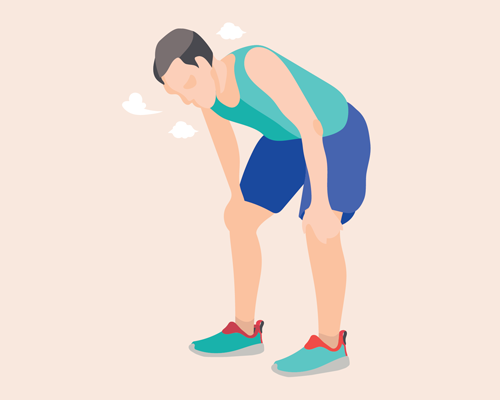
It should make perfect sense that if you don’t want exercise to be a stress on your body and thyroid, then you must stop the stress response before it happens.
When you do cardio, aerobics, or other exercise that require constant high energy demands without rest, you burn through your body’s fuel supply extremely fast.
As soon as you run out of fuel, you force your body to over-produce stress hormones.
That’s why these types of exercise are most harmful.
They force a bigger stress response, and force it faster, than any other type of exercise.
Many studies show this among those who do cardio or endurance forms of exercise that require sustained periods of high energy production. For example:
Elevated hair cortisol concentrations in endurance athletes. http://www.ncbi.nlm.nih.gov/pubmed/21944954 “These data suggest that repeated physical stress of intensive training and competitive races among endurance athletes is associated with elevated cortisol exposure over prolonged periods of time. These findings may have important implications with regard to somatic and mental health of athletes which should be investigated in future research.”
These results are not limited to athletes alone.
In fact, since you are hypothyroid and can’t store fuel, then it often takes very little exercise to induce this very same stress response.
In some more severe cases, this can be as little as a 15-minute walk, or even walking up a flight of stairs.
In other words, this stress response isn’t limited to just exercise.
It includes the physical demands of everyday life too.
Whatever type of exercise you do, if you find yourself out of breath for a prolonged period, then your body is likely shutting down your thyroid.
Just think of all the people who are purposefully using these dangerous forms of exercise, desperate to lose weight (or maintain it).
You may lose a few pounds initially by forcing your stress hormones higher.
But, when your thyroid and metabolism shut down, you gain that weight back, and oftentimes more.
We know that stress hormones suppress your thyroid function.
We also know that cardio, aerobics, and other forms of endurance exercise drive your stress hormones higher.
Then, it should make perfect sense that these types of exercise are not conducive to restoring your thyroid function and healing your metabolism.
If you can remember from the previous post “How We Helped One Client Lose 17 Pounds by Boosting Her Thyroid with Exercise”, to help prevent this dangerous stress response, you need to exercise within what we call the “Thyroid-Supportive Energy System”.
Cardio, aerobics, and endurance exercises are the farthest thing from using this important exercise energy system.
Yet, the type of exercise you do isn’t the only factor that can trigger a stress response to exercise, as I’m about to show you.
2. Never Skips Meals or Exercise on an Empty Stomach

This is possibly the worst advice ever given when it comes to exercise.
I hear it all the time, and it makes me cringe.
Remember, we just covered how a lack of fuel is what drives the thyroid-suppressive stress response when you exercise.
Now, where do you think that fuel comes from?
Drumroll please…
That fuel comes from the foods you eat!
So, when you skip meals or exercise on an empty stomach, you’re depleting your body of the fuel it needs to prevent exercise from ruining your thyroid.
You’re simply setting yourself up for failure.
As mentioned above, you may lose some weight, but you’re ruining your thyroid in the process.
I talk more about how this only sets you up for long-term weight gain in this post on “Why Exercising More and Eating Less Is the Best Way to Gain Weight with Hypothyroidism”.
Instead, thyroid sufferers need to be eating and replenishing their fuel supply before, during, and especially after exercise.
Most importantly, you need to focus on carbohydrate intake, which is the primary nutritional factor that prevents exercise-induced stress hormone production.
Influence of acute vitamin C and/or carbohydrate ingestion on hormonal, cytokine, and immune responses to prolonged exercise. https://www.ncbi.nlm.nih.gov/pubmed/16327030 “CHO [carbohydrate] and CHO+VC significantly blunted the post-exercise increase in plasma concentrations of cortisol, ACTH, total leukocyte, and neutrophil counts and limited the decrease in plasma glucose concentration and bacteria-stimulated neutrophil degranulation.”
Skipping meals or exercising on an empty stomach is a quick way to drive your stress hormones even further through the roof.
In our Hypothyroidism Exercise training we don’t only walk you through the best and most effective workouts and exercises to use, we also walk you through exercise-nutrition and show you exactly what to eat, and when to eat it, to boost your thyroid with exercise.
You can get all the details about this Hypothyroidism Exercise training by clicking here.
Now, let’s imagine that you’re properly exercising and getting adequate exercise nutrition.
There’s still one more tip you’ll need to help ensure that you’re doing it all right.
3. Monitor Your Temperature and Pulse
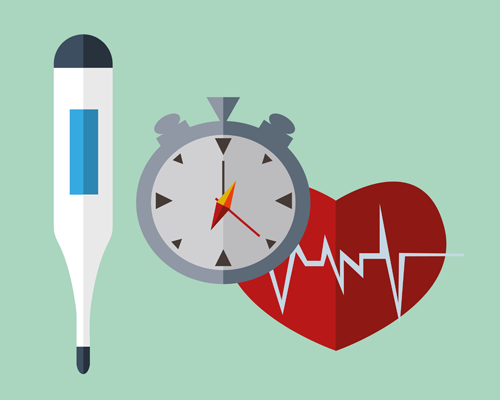

I talk a lot about how simply measuring temperature and pulse is a far more accurate test for thyroid function than lab testing.
In fact, we have an entire thyroid testing training series on this.
Yet, most people don’t realize that we can also use temperature and pulse to test your response to supplements and medications, diet, and even… exercise.
It can effectively tell you whether your workout was productive, or if it induced a stress response and was counter-productive.
It’s simply another valuable tool we can use to ensure that your exercise isn’t ruining your thyroid. All you need is a thermometer and a watch/timer.
There are only two steps required:
- Record your temperature and pulse (at rest) before your workout.
- Record your temperature and pulse (at rest) again 45 minutes after your workout.
Then compare the two.
If your post-workout temperature is lower than your pre-workout temperature, or your pulse remains significantly elevated above 85 bpm post-workout, then this can indicate that your stress hormones are being over-produced and your thyroid negatively affected.
You also need to account for other signs like fatigue, cold extremities, etc.
If you fail the test or experience a worsening of symptoms, then this ultimately means that you need to make some changes to your nutrition and exercise plan.
Sure, people love to step on the scale everyday as a way of measuring their results.
But a positive shift in your scale is not an accurate indicator of a positive shift in your health. In fact, it can mean quite the opposite.
So, don’t rely on your scale for feedback. Temperature and pulse are far more accurate indicators.
Many of the exercise myths, mistakes, and just poor advice out there today all stem from the lack of knowledge and understanding of how exercise affects our bodies and hormones.
Instead of assuming all exercise is healthy, and the more the better, start monitoring your temperature and pulse and see for yourself if your workouts are really helping you and your thyroid.
Following these simple tips will put you ahead of ninety-nine percent of people out there that exercise and help prevent many common thyroid exercise dangers.
And simply use some common sense.
If you become fatigued and your performance decreases when exercising, then listen to your body and call it a day.
This is your body’s way of telling you that it’s too much. Many people also think that exercise is a healthy means of relieving stress.
As I’ve explained, strenuous exercise doesn’t relieve stress, it promotes it.
So, if you’re feeling particularly stressed on any given day, exercise is probably the last thing your body and thyroid need.
Remember, exercising with hypothyroidism isn’t about exercising harder. It’s about exercising smarter.
And that’s exactly what we teach in our Hypothyroidism Exercise training.
We show you exactly how to stop this dangerous stress response before it ever starts, and how to take advantage of all the thyroid-boosting benefits of exercise to help you improve your thyroid health.
You can get all the details about this Hypothyroidism Exercise training by clicking here.


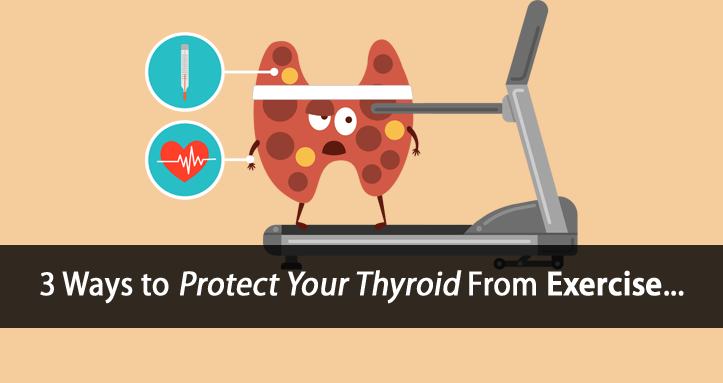
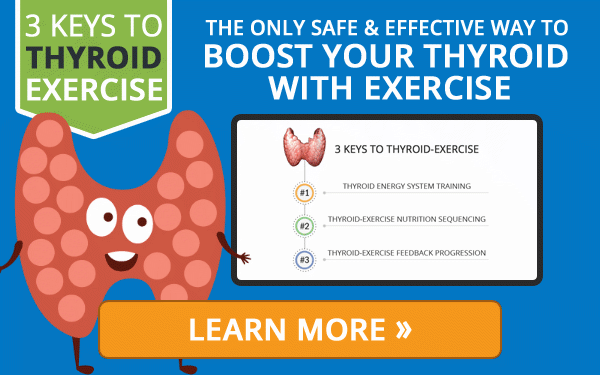
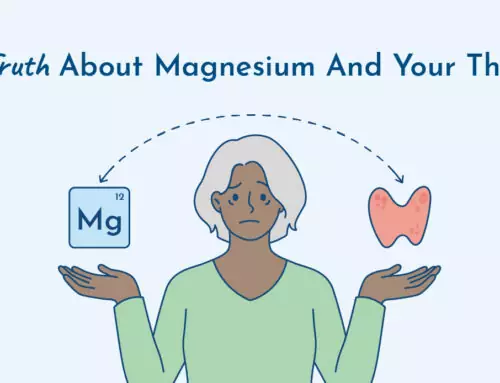


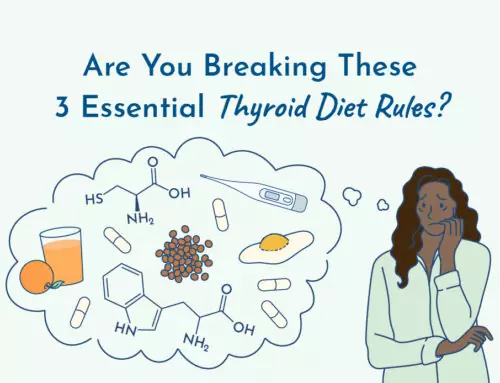
What if you want to keep doing an endurance exercise because you enjoy it such as bike riding or hiking all day? Can’t you just be sure to keep refueling yourself every hour or so, so that your body always has a fuel source from food?
Hi Steve, exercise nutrition is essential, but it can only go so far.
what do you suggest for people who love running marathons
There are plenty of studies showing the adverse hormonal effects of such forms of exercise. Sometimes we have to choose what’s more important in life.
Hi,
This article brings on a lot of Aaah.
I am diagnosed of having cfs and I am trying to improve my endurance by walking every day. But …. after 20 – 25 minutes the fuel isn’t there anymore and the next day I am very tired. 15 minutes goes well. So from now on it will be 15 minutes. BUT will this better my endurance over time also? Because I would love to walk ( a lot ) longer.
Your exercise endurance should increase over time. Using adequate exercise-nutrition is key too.
My son is pushing me to get a stationary bike for exercising. I am 85 and hypothyroid. My feeling is that this is not a good way to go for me. I can’t find any kind of information that I can use as reference. My sense is that TaiChi or Qigong would be better. But I need some kind of good information to get him to back off pestering me. :)
Thanks,
Yes, both Taichi or Qigong are great forms of exercise.
I just left a comment and forgot to say, I have peripheral neuropathy and some kind of exercise would help that.
So I am currently employed as a CNA for a hospital & on the days of my shifts, I take anywhere between 8k-14k steps on 8-12 hr shifts. Could this also be considered too much of a strain on my body, or no, since it’s spread out long enough throughout the day? So far I’ve lost 10lbs over the past couple months thanks to this new job & with an extra boost from dietary changes, but want to be sure that this is a GOOD method of loss & I’m not looking at gaining it all right back!
Also would you advise that I do anything else for a form of exercise on top of this? Or would adding anything else just immediately induce a stress response?
It’s very individualized. As I’ve mentioned, some thyroid sufferers struggle climbing a flight of stairs. Other’s can handle more intense exercise. So, it really depends on what your body can tolerate. Which is why we use the temp/pulse testing.
Tom would you feel recovery periods using your protocol from overtraining/underfuelling induced hypothyroidism in elite sport would be relatively quick to recover from? I seem to have little issues with high estrogen/prolactin, good testosterone levels but my t3 levels plus body temperature are a good bit of. Would love to hear your thoughts. I attached my bloods for reference
Jack
Bloods: August 4th 2018
TSH: 1.9 uIU/ml
Free T4: 0.8934 ng/ml
Free T3: 1.8 pg/ml
Total T3: 73.563 ng/dl
Anti Thyroglobulin anti-bodies: 1.51 IU/ml
Anti Thyroperoxidase anti-bodies: 0.24 kIU/L
Hormonal profile
Total Testosterone: 810.46 ng/dl
Estradiol: 18.8 pg/ml
FSH: 3.23 IU/ml
LH: 1.6 IU/ml
SHBG: 65 nmol/L
DHEA: 25.7 nmol/L
Prolactin: 140 IU/ml
Cortisol (9.30am)- 261 nmol/L
Liver enzymes:
ALT: 24 IU/L
AST: 36 IU/L
I think it entirely depends on the person and the underlying dysfunction(s). There are many things that can induce hypothyroidism, but the hormonal changes that occur as a result make it difficult to recover.
Hi Tim. You mention the test of checking pulse and temperature post exercise. If after 30 min of cardio my temperature and pulse do not suggest stress hormone being produced, would you say it is “ok” to do my cardio work out? I love running in the woods near my home.
Any exercise that puts you outside of the ATP-PC energy system would be problematic for thyroid sufferers.
How about HIT interval training…it’s shown to boost levels of healthy hormones and HG and uses a quick sprint workout versus and endurance one?
Thanks.
Haven’t seen any specific studies but be careful with exercise designed to increase HGH. It’s often promoted for weight loss but is dangerous. It’s a stress hormone and when elevated has been implicated in a number of health issues including osteoarthritis.
Hi Tom! I have Hashimotos and have read a lot about fasting and how it is beneficial for the thyroid. It actually gives me energy. I have a clear head and feel light, not bogged down. So from this article do I have to give up my spin class I love so much? And is hot yoga ok? This is all so frustrating!
I’m not sure where you heard that, but fasting is very thyroid-suppressive as covered in most physiology texts. The reason you feel better is because of the stress hormones, which are excitatory yet thyroid-suppressive. This is covered here: https://www.forefronthealth.com/low-carb-thyroid-dangers/
Fasting while taking a spin class would simply suppress thyroid function even faster.
What are your thoughts on strength training? I have been on T4 for three years now and come from a family with many hypothyroid sufferers. Resistance training with heavy weights has been the only sure way for me to relieve the sluggishness and depression that so often accompanies hypothyroidism. I would hate to give it up, but if it is also damaging my thyroid, perhaps I should.
Weight training is a general term, i.e. Crossfit can be considered weight training, but wouldn’t be something recommended. If the weight training focused on the ATP-CP energy system then it could certainly be used. However, always use the temp/pulse test to ensure that whatever you do is safe.